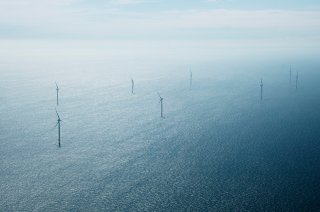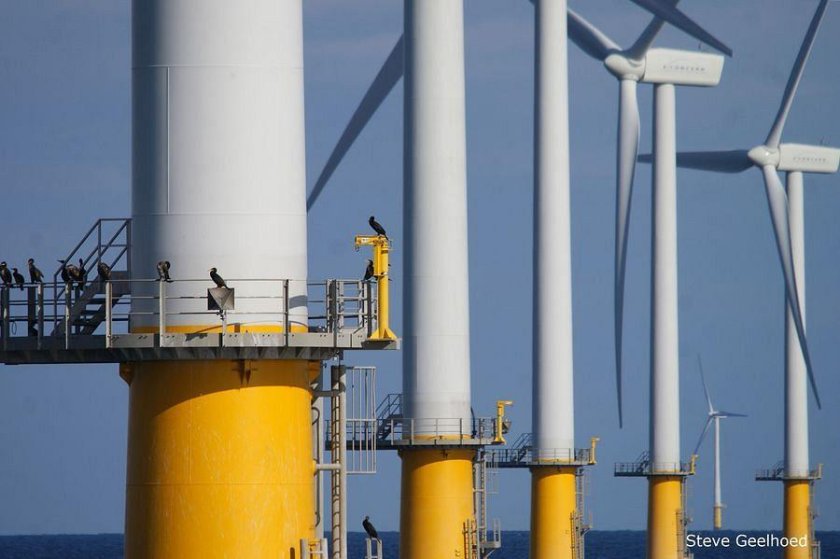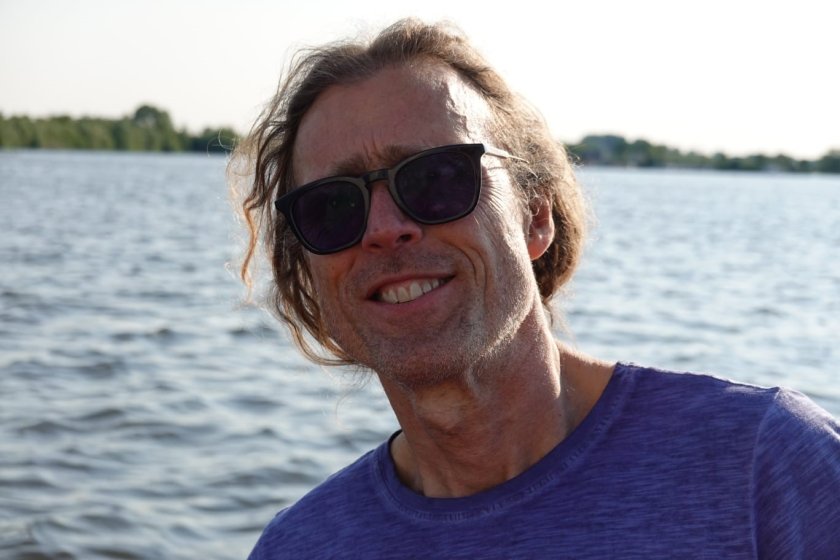
Interview
Adding it all up
Research on the impacts of offshore wind is usually sector-specific, thus ignoring potential cumulative effects in combination with other pressures, such as fisheries or contaminants. In addition, the total effect may well be greater than the sum of its parts. Therefore, researchers and decision-makers had better take a more integrated perspective, argues Gerjan Piet.
“There are all kinds of human activities at sea, and sector-specific impacts add up to a larger overall impact on the natural ecosystem,” says Gerjan Piet of Wageningen Marine Research. He investigates the so-called cumulative impacts of human activities in the North Sea: the combined impacts of, among other things, fishing, shipping, aquaculture, recreation, pollution and wind farms. “There is broad consensus on the need for an integrated, ecosystem-based approach”, he says. “In practice, however, this is happening only rarely. Management as well as the assessment of potential environmental impacts are conducted on a sectoral basis.”
You have to add up the impacts of different activities and their resulting pressures.
Cumulative effects
Addressing cumulative effects is an important element of taking an integrated approach, says Piet. “You have to add up the impacts of different activities and their resulting pressures”, he says. Sometimes they even reinforce each other, in what is called a synergistic manner. Methodologies to determine synergistic effects are not yet available. “For cumulative impacts, they are”, says Piet. “They are already in use to guide ecosystem-based management, mostly elsewhere in Europe but hardly in the Netherlands. I do hope that this will change as a result of the North Sea Agreement.”
Piet gives an example of the inherent complexity of cumulative impacts. Firstly, there are many different ways in which a single sector potentially impacts the ecosystem. Fisheries not only affect fish stocks, but bottom trawling also disturbs the seafloor, and is one of the main contributors to marine litter, including lost nets. Secondly these so-called ghost nets may cause mortality of marine mammals, which adds up with potential effects of windfarms through noise. This shows how different factors may have a combined influence on the North Sea ecosystem. “Traditionally, fisheries management only focuses on the commercial fish stocks”, he says, “whereas the offshore wind sector only considers its own impact, thus ignoring potential cumulative effects. In both cases this reflects only part of the story.”

In addition, there are impacts from other sectors, such as sand extraction, shipping, recreation, land-based industries and agriculture. “What’s important here is the sum of these effects”, Piet emphasizes. “And of course there is climate change, which further complicates things. With various emerging activities and a current status where most biodiversity goals are not achieved, it is important to consider compensatory measures, such as artificial reefs for wind farm scour protection or a marine reserves in order to protect biodiversity.”
Large database
For different elements of the North Sea ecosystem, Piet and his colleagues map out so-called impact chains representing each pathway through which a specific sector and its pressure may potentially impact a specific ecosystem component. “There are thousands of potential impact chains”, he says. “And for each of these, you have to investigate the relative contribution to the risk of impact and hence the likelihood that the objective of a good enfironmental status of the North Sea is compromised.”
This vast amount of research comes with considerable information demands and results in huge databases. The scientists can organise and link the data in various ways, and then use them for their calculations.
Our conclusions do not necessarily result in limitations only, but can sometimes lead to solutions as well.
Science for decision-making
Piet understands that parties are hesitant when it comes to such assessments. “After all, things are extremely complex”, he says, “and people are not used to looking beyond their own field of expertise. But it’s inevitable: we all need to take an integrated approach when it comes to ecosystems and biodiversity conservation. Today’s challenges are too complex to be solved on a sectoral basis.”
It’s always a question of money and priorities, he notes. “Offshore wind in the North Sea is already emerging fast, and things will even speed up in the next ten years,” he says. “At present, we’re not yet in a position to guide that process with appropriate science. There’s still a significant knowledge gap, which our research aims to bridge.”
Follow-up steps are a matter for society and policymakers. “Given the requirements of the energy transition and planning of offshore wind farms, then what are the technical options and environmental consequences? What is the optimal scale and location? Is there space for fishing or aquaculture, and if so, at which level? It’s this kind of decision-making that we’re hoping to support.”

Room for expansion
Piet is pleased with the North Sea Agreement, which prominently features research and monitoring ambitions. “In this regard I’m optimistic”, he says. “Clearly, the momentum is changing. Our research can play a positive role in this.”
It can only help in the planning of activities at sea within the environmental constraints, he adds. It can also demonstrate that limiting one negative impact can open up possibilities for another activity to be expanded. “Just like in the Dutch nitrogen crisis,” says Piet. “So our conclusions do not necessarily result in limitations only, but can sometimes lead to solutions as well. That’s great, because in the end, achieving a sustainable exploitation of the North Sea and its resources is in the interest of us all."